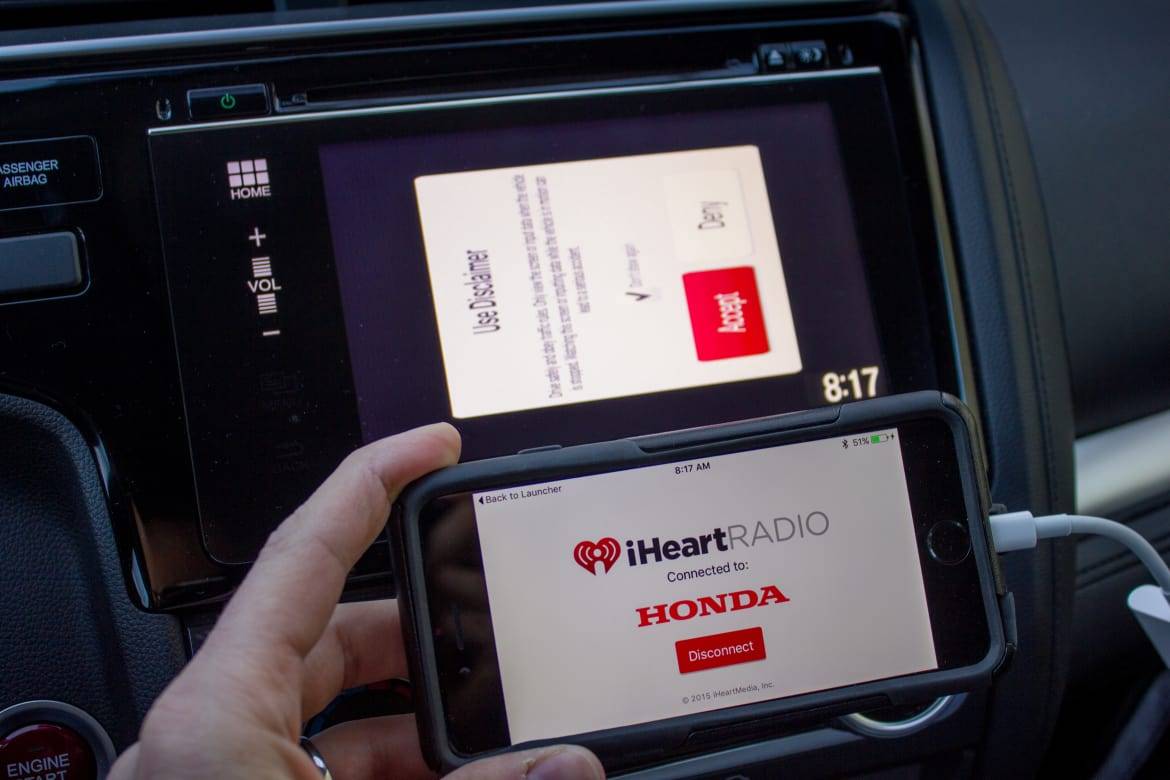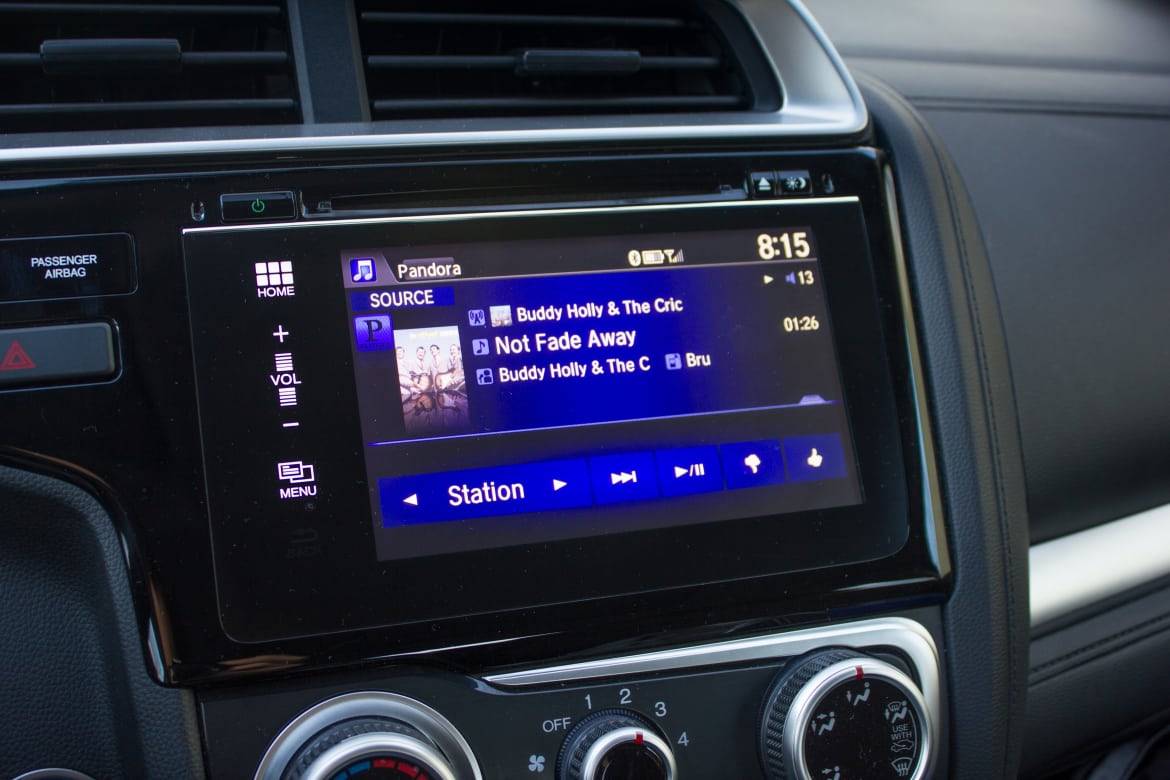2015 Honda Fit Apps Remind Us Why Apple CarPlay, Android Auto Rock


CARS.COM — When it comes to smartphone gadgets in the 2015 Honda Fit, you won’t find Apple CarPlay and Android Auto like you will in the 2016 Honda Civic and Honda Accord. Instead, we’re stuck with HondaLink NextGeneration in Cars.com’s long-term 2015 Honda Fit test car. HondaLink lets users stash their phone while using the Fit’s multimedia system to control five available smartphone applications.
Before you get excited about five whole apps, Aha and iHeartRadio streaming radio are the only recognizable ones. We dug into our long-term Fit’s convoluted media system to see how well the apps work with a late-model iPhone 6.
Related: Follow Our Long-Term Fleet
First, firing up HondaLink isn’t as easy as plugging your iPhone into a USB port and opening up existing Aha and iHeartRadio apps. HondaLink requires an iOS Cable Kit ($99) available through Honda that includes an HDMI cable, Lightning USB cable and Apple Digital AV converter. One end of the contraption plugs into the iPhone’s Lightning connector while the other plugs into the Fit’s HDMI and USB vehicle inputs located below the multimedia system and climate controls; yes, that’s why there’s a mysterious HDMI input in the Fit.
With the required compatibility hardware acquired, it’s time to download the HondaLink App Launcher and HondaLink-specific version of Aha as well as the automotive-specific version of iHeartRadio; standard versions don’t work with HondaLink. HondaLink’s other apps include a pricey navigation service ($59.99) reviewed here and HondaLink Connect with local weather info, service reminders and owner’s manual.

Pro tip: Open the HondaLink Aha app and log in before plugging into the digital AV converter. Remember, this is a different app than the standard Aha mobile app, so you’ll have to log in after downloading. Once logged in and plugged in, navigating Aha radio programming is surprisingly easy considering the effort it takes getting to this point. Honda’s 7-inch touch-screen is colorful and vibrant with large enough text and easily identifiable buttons. Keeping the experience from being completely fulfilling was intermittent visual static and audio loss seemingly caused by the digital AV converter, which fritzed when moved.

The iHeartRadio app didn’t even get that far without a glitch. Other Honda owner’s results may vary, but a message popped up on the car’s touch-screen, sideways, asking me to accept some legal terms, and it wouldn’t let me hit the “accept” button. A Honda customer service technician was also confused and said he hadn’t seen anything like that before; he recommended resetting the Fit’s media system to factory defaults. The reset erases all compatible smartphones and presets — sorry, colleagues — and sets the system back to factory, but the reset didn’t help. With all the apps updated, the system reset and the use of the recommended factory cables, customer service suggested we take the car to the dealership for a service appointment for further diagnosis, and that’s our next step.

The best app integration in our Fit EX isn’t actually a HondaLink app. Pandora, accessible in the main-display audio touch-screen, works via USB input and does a simple and near-perfect job mirroring Pandora’s main functions on the media screen. Connecting to Pandora is as easy as being logged into Pandora on your iPhone and using a USB cable or Bluetooth. And that’s how it should be, like the usability offered by Apple CarPlay and Android Auto.

HondaLink hasn’t exactly flourished with more app offerings since its introduction in the 2013 Honda Accord. Apple CarPlay and Android Auto look to be the direction in which Honda is heading, and it’s one that could easily make the hard-to-use and expensive HondaLink system obsolete, which wouldn’t be a bad thing considering our struggles to get the system to work in our 2015 Fit.

Managing Editor Joe Bruzek’s 22 years of automotive experience doesn’t count the lifelong obsession that started as a kid admiring his dad’s 1964 Chevrolet Corvette — and continues to this day. Joe’s been an automotive journalist with Cars.com for 16 years, writing shopper-focused car reviews, news and research content. As Managing Editor, one of his favorite areas of focus is helping shoppers understand electric cars and how to determine whether going electric is right for them. In his free time, Joe maintains a love-hate relationship with his 1998 Pontiac Firebird Trans Am that he wishes would fix itself. LinkedIn: https://www.linkedin.com/in/joe-bruzek-2699b41b/
Featured stories




